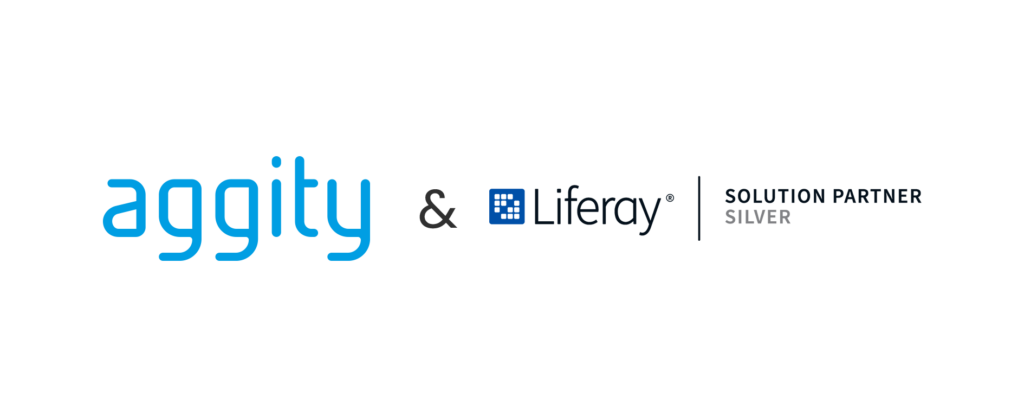Official Liferay Partner in Spain

What is Liferay and how does it drive digital business transformation? Liferay is a Digital Experience Platform (DXP) that allows companies to create personalized digital experiences for employees, customers, and suppliers. As a leader in enterprise portal creation, Liferay offers flexible and scalable solutions to meet the needs of various industries. In addition, the Liferay DXP platform allows the unification of multiple tools and systems under a single structure, making it easier to manage content and create employee portals, internal portals, and distributor portals, which are essential in driving digital business transformation. Liferay’s definition: The digital solution for modern businesses. Liferay is a modular platform that allows for the development of customized solutions such as an employee portal, a payroll portal, or a job portal. With Liferay, companies can optimize their internal processes, enhancing the experience through a solution based on their own technology. Liferay key components: Flexibility and customization. One of the key features of Liferay is its ability to deliver customized solutions through its low-code approach, allowing business users to personalize the platform without needing a large technical team. This makes it ideal for creating web portals of any kind. Liferay as a driver of digital transformation in organizations. Liferay drives digital business transformation by creating cohesive digital experiences across different channels and devices. With Liferay DXP, companies can develop a cutting-edge solution that facilitates access to key services such as payroll inquiries or human resource management. Key Capabilities of Liferay The Liferay DXP platform stands out for providing a wide range of features designed to enhance operational efficiency. These capabilities enable companies to create robust and secure enterprise portals that can integrate with multiple systems and be customized for different users. Gestión de contenido empresarial (CMS) para múltiples canales Liferay’s content management system (CMS) is one of its most prominent components. It allows organizations to publish, manage, and distribute content efficiently across various channels. This is crucial for companies looking to keep their internal portals updated, facilitating communication and collaboration within the organization. Gestión de activos digitales (DAM: Digital Asset Management) Liferay includes a digital asset management solution that allows organizations to store, organize, and manage images, videos, documents, and other assets in a centralized repository. This facilitates content reuse and ensures consistent use across all channels. E-commerce Liferay DXP provides e-commerce capabilities, allowing companies to create and manage online stores with customization options, product management, and a secure payment system. It is ideal for organizations looking to integrate their digital channels with a seamless and efficient shopping experience. Personalización de experiencias con IA y segmentación avanzada With advanced AI-based personalization capabilities, Liferay enables companies to segment their audience and deliver relevant content to each user. This technology is ideal for creating employee portals or distributor portals that tailor information based on the role or needs of the employee, customer, or supplier. Optimización de las búsquedas Liferay has a powerful search functionality that allows users to easily find the information they need. Its search engine is optimized to provide accurate and relevant results, enhancing the user experience in portals with large volumes of content. Sites flexibles y escalables Liferay enables the creation of flexible websites that can be tailored to the specific needs of any business. Websites built with Liferay are highly scalable and offer a modular structure that facilitates expansion as the organization grows. Benefits of Implementing Liferay in Your Company Implementing Liferay in a company provides numerous benefits, from scalability to customization. Companies can develop sites that fit the specific needs of their business, enhancing operational efficiency and user experience. Scalability and tailored flexibility One of the main advantages of Liferay is its ability to grow alongside the needs of the company. From an employee portal to a complex customer management system, Liferay can adapt to changing business demands without compromising performance. Advanced security and regulatory compliance Regulatory compliance and security are key aspects of any enterprise portal. With Liferay, companies can be confident that their sites are protected with the latest security measures, ensuring compliance with regulations such as GDPR. Optimized and personalized digital experiences. Thanks to its advanced personalization capabilities, Liferay allows for the creation of portals tailored to each user. This optimizes the digital experience, making it easier and more relevant for users to find the information they need. Low-Code: Desarrollo ágil para usuarios de negocio Liferay facilitates the creation of enterprise portals through its low-code capability, allowing business teams to customize them quickly and easily. This is essential for managing these types of sites where changes need to be implemented swiftly. Integración con sistemas externos Liferay is highly interoperable, allowing for seamless integration with external systems such as CRM, ERP, and others. This ensures that organizations can leverage their existing technology investments and create fully integrated portals with the rest of their infrastructure. Seguridad avanzada Liferay DXP is designed with a focus on security, ensuring that enterprise portals meet the highest data protection standards. With robust access controls and auditing tools, the platform protects both business information and user data. Capacidades en la nube (Cloud) Liferay also offers the option to be deployed in the cloud, providing companies with flexibility and scalability in managing their portals. Organizations can benefit from a secure cloud infrastructure, with global access and reduced maintenance costs. Liferay in Various Business Sectors Liferay offers tailored solutions for a wide range of industries, from banking to the public sector. With its flexible platform, companies can develop everything from internal portals to employee portals, all within a secure and scalable environment. Liferay in the Banking Sector: Digitizing Banking In the financial sector, Liferay has proven to be an effective solution for developing customer portals that allow for secure account management, services, and resources. This facilitates digital interaction between the financial institution and its clients, enhancing the user experience. Use of Liferay in Manufacturing: Portals and Productivity The manufacturing industry greatly benefits from Liferay’s capabilities, such as the creation of supplier and collaborator portals, which optimize supply chain processes
How to increase engagement with engagement strategies

For companies looking to improve their relationship with customers and increase their participation, engagement strategies are key. In this post how engagement techniques can transform customer interaction and foster a deeper, more meaningful connection. Discover how to increase customer engagement by applying effective engagement strategies. Learn essential tactics in our post. The key to the success of any company lies with the customer. Without them, no organization would exist and, therefore, it is necessary to build and maintain a close relationship with them. Engagement strategies, also known as customer engagement techniques, play a fundamental role in establishing a deep and lasting connection between the company and its customers. The objective pursued with the development of engagement strategies is to get customers involved with a certain brand, product or service marketed by a company. The idea is that the customer not only makes a purchase, but that an ongoing relationship is established that allows loyalty, maintains their interest in the long term and even turns that customer into a spokesperson for the brand that attracts other customers. The engagement strategy should cover both physical environments with attractive experience proposals and digital environments and should, for example, boost engagement in social networks, improve user interaction or promote an increase in online participation . Essential elements Engagement strategies can incorporate different techniques and elements. Relying on tools to improve engagement as the platform Digital Customer Engagement by aggity allows you to know exactly who the customer is, so that you can provide them with the product, service or experience that best suits their needs in real time and in an integrated way across both physical and digital channels. Such a platform allows the company to know its audience perfectly and provides it with the ability to measuring digital engagement as it includes analysis tools for to better understand customer preferences and behaviorsas well as for segmenting the audience y customize communications. Create relevant content One of the most important elements in engagement strategies is the creation of relevant and valuable content that allows the company or brand to connect with both the existing customer base and those who show interest in it. Good content, including branded-content, is more likely to generate greater loyalty from digital users and can be disseminated in different channels, whether corporate blogs, the company’s different accounts on social networks or in brochures and marketing campaigns, among others. Through these, the company can incorporate customer testimonials, tips and tutorials related to a particular product or service, as well as marketing campaigns that attract and maintain customer interest. Related to content, it is also important to encourage interaction with customers through questions, calls to action or more interactive formats such as surveys or questionnaires. All of this will lead to an increase in online participation, which in turn will create a community of satisfied users who will become the brand’s main ambassadors. Multiple channels The greater the number of channels, the greater the chances of attracting and retaining customers. For example, if communication with the customer is carried out only by telephone or e-mail, the company will be losing the possibility of reaching new users. Likewise, the customer service department will be saturated, which in peaks of demand can be a problem that will have a negative impact on the company’s image. Using multiple channels will maximize impact and allow you to reach a diverse and fragmented audience. If this multiplicity is combined with online engagement tactics and interactive content strategies, it can more effectively capture the attention and loyalty of users. Fast and personalized response One of the objectives that engagement strategies should pursue is the optimization of thecustomer experience. Two important factors must be taken into account here: rapid response to customer interactions and personalization. When customers approach a company through any of the available channels, they need the fastest possible response. This promotes their loyalty to the brand and helps build a solid relationship. Conversely, a slow response will generate dissatisfaction, which may result in a loss of potential customers. Moreover, just as personalization influences campaigns, the response given to a customer needs to be as personalized as possible. In this way, you will see that the company knows you and cares about your needs, which will help build a deeper connection.
How to implement Geolocation Marketing to increase sales

Geolocation marketing is essential for marketers looking to personalize their customers’ experience and maximize the impact of their campaigns. In this article we will discover how to implement various strategies to improve interaction and increase sales. Discover how geolocation marketing can elevate your engagement strategies and effectively increase your sales. As its name suggests, geolocation marketing is based on knowing the geographic location of a person who is either a customer of a brand or a potential customer. Its big advantage is that by leveraging location data, companies can run location-based advertising campaigns, offers or customized content to a very specific audience. In this way, companies and, specifically, marketing departments can improve the effectiveness of their communications, increase conversion rates and strengthen customer loyalty or customer engagement. But how do you execute a geolocation marketing strategy? Analysis and segmentation Geographic segmentation is one of the most widely used segmentation marketing strategies. Obviously, the first step is to geolocate users. Once users have given their permission, the company must employ geolocation technologies that allow it to know the location of its customers. This includes the use of GPS in mobile devices, the use of geofencing tools for marketing or they can also use engagement in social networks to know where users are. From here, and with the data obtained from each of the customers, the marketing department should segment the audience based on the geographical location of the users. With the analysis of geographic data and the possibilities offered by the combined use of mobile marketing and applications that users have installed on their smartphones, retailers can carry out proximity campaigns to increase the relevance and effectiveness of marketing strategies and actions. Optimization for local searches In a geolocation marketing strategy it is also essential that the business is optimized for local searches on Google and other search engines. A platform like Digital Customer Engagement by aggity, focused on customer data management, helps in the task of implementing local SEO for businesses. Optimizing for local search on Google involves, in others, having a well-managed Google My Business listing with geographically relevant keywords, as well as executing local content personalization that is engaging and appeals to consumers. Location-based advertising Customers are demanding more and more, and among these demands, personalized content is one of the most sought-after elements. Within targeting and positioning strategies, geographic targeting involves using advertising platforms that allow segmentation by location. The company has to be able to provide its customers with content that fits their needs and interests. The use of this type of platform allows for precise targeting of ads and messages based on the users’ location, which increases customer receptivity. In this sense, the company can benefit from the advantages provided by both the communications and communications and ads on social networks as well as local search advertising, as it allows the brand to reach the audience based on its geographic location. Mobile marketing strategies Of course, nowadays any geolocation marketing campaign has to be developed for mobile environments and optimizing the mobile user experience has to be one of the priorities. For this, the most important factor is that the brand’s website is perfectly optimized for use on mobile devices. This ensures a seamless user experience, which increases customer satisfaction and helps improve brand positioning in mobile search results. In a geolocation marketing strategy, it is also critical to take full advantage of the capabilities that a smartphone provides, by allowing you to reach consumers at the right time and place. In this regard, some of the most commonly used strategies are the sending of special offers to users when they are near one of the company’s points of sale, the dispatch of push notifications or the realization of quick and easy surveys to find out why the customer has not entered a store or to collect the evaluation of the service provided in the case of having entered the store.
Green Marketing Strategies for 2024

Green marketing is positioned within the strategies of marketing directors and CMOs to differentiate their brands and gain competitive advantage. This approach improves brand perception among consumers and accelerates sustainable business practices. Discover how to implement effective green marketing strategies in 2024 to promote sustainability and capture the attention of your audience. Sustainability has become a rising value for any organization. As a result, companies are implementing various green marketing initiatives, which demonstrate to customers their commitment to sustainability and help companies become more competitive by generating greater consumer interest. In the different green business strategies that are being incorporated into companies, the green marketing is in charge of informing customers of the importance for an organization of the importance of sections such as packaging ecofriendly the waste reduction strategiesthe environmental commitment of the brand or the corporate social responsibility (CSR) initiatives among many others. What is green marketing? Green marketing is one of the different legs that make up a company’s corporate sustainability strategy. Also known as green marketing or sustainable marketing, it refers to the practice of promoting products and services that have a positive environmental impact or are marketed in a sustainable manner. A green marketing strategy includes communicating the environmental benefits of the products and services offered by a company and adopting marketing practices that minimize environmental impact, such as developing sustainable advertising or holding green corporate events. Establishing a green marketing strategy There are several elements that help to establish a green marketing strategy, but all of them should start with environmental audits in marketing, which analyze the environmental impact of the company’s operations. Through these, companies can identify areas for improvement and set targets to promote innovation in sustainability. The establishment of a green marketing strategy not only allows to obtain different environmental certifications for companies, but also to improve the image of a brand, increase revenues in the long term, reduce costs or establish ecological alliances in the sector in which the company operates. Emerging trends Given that customers and consumers place more value on sustainability when purchasing a certain product or service, anticipating their preferences and needs will mean getting ahead of your competitors. Solutions such as Digital Customer Engagement by aggitywhich employs data analytics and AI technology, allows you to carry out customized green marketing communications and even anticipate the needs of users through the use of predictive marketing modelsmaximizing the conversion rate of the shares. In addition, by leveraging emerging trends, environmental awareness campaigns reinforce the brand’s sustainability communication. Integration of sustainability For green marketing to be of value, sustainability must permeate all departments of a company. There is no point in selling organic products and their promotion if the rest of the company does not believe in them. In these cases, the consumer will quickly detect that what is being promoted is not in line with the company’s policy. For example, there is no point in promoting a green item if the company does not have a green supply chain management policy. In this regard, it is important to develop a line of communication both internally (with respect to employees) and externally (with respect to customers) to provide guidelines for incorporating sustainable practices into the brand identitythat enhances the values of the organization and that makes known the corporate actions on sustainability such as, for example, the investment in green technologies of the company. Measuring impact and ROI In establishing a green marketing strategy, it is important to analyze whether the policy being developed is bearing the right fruits. It is not only a matter of measuring environmental impact, but also of measuring whether green marketing actions have resulted in an economic return or improved corporate reputation. By measuring the impact of a green marketing strategy, companies can evaluate how their actions have contributed to the reduction of environmental impact. This includes metrics such as carbon footprint carbon footprint reduction The impact of the circular economy and reuse in product manufacturing, as well as the increase in the level of customer engagement with the brand through its sustainability policy.
Data Mining Strategies in Marketing

Data Mining in Marketing has become an essential tool for these departments. In this article we explore the key strategies to make the most of this technique and better understand your customers. Optimize your marketing strategy with Data Mining. Learn how to apply these techniques to obtain valuable information about your customers. Data mining in marketing allows organizations to obtain valuable information to drive their strategies, detect opportunities and accelerate decision making. Data analysis in marketing is of increasing value and specifically, data mining refers to the process of discovering meaningful patterns and trends by analyzing large data sets. The goal of any marketing department is to better understand the company’s customers in order to predict behaviors and personalize content and advertising campaign strategies, as well as execute marketing campaign optimization to increase sales. For the establishment of certain strategies, the Digital Customer Engagement by aggity solution allows to carry out excellent customer analytics and establish data analysis strategies to build customer loyalty and turn them into brand lovers. But what are some of these strategies? Audience segmentation One of the most important elements for any marketing department is the ability to offer customers a personalization of content to suit each customer’s needs. For this reason, segmentation segmentation marketing strategies, using data mining using data mining, can divide all customers into homogeneous groups based on behavior, preferences and demographic characteristics. This dataset provides marketing departments with a comprehensive framework that allows them to target campaigns to a target audience. This use of data mining in advertising allows companies to tailor messages, offers and campaigns specifically to each segment. Detection of buying patterns This is one of the elements that companies using Data Mining Marketing have been analyzing for the longest time. This is one of the keys to predicting customer behavior. Understanding customer buying patterns allows companies to implement effective cross-selling and up-selling strategies. By detecting buying patterns, companies can identify which products tend to be purchased together or when a customer is most likely to make an additional purchase. This is one of the most widely used data mining techniques because it allows marketing and sales departments to personalize offers to consumers and thus maximize opportunities for additional sales. Optimization of advertising campaigns Typically, companies use tools that allow them to make certain personalized recommendations to the customer. The use of artificial intelligence will further accelerate the creation of personalized campaigns by using data-driven recommendation algorithms to offer specific products or content to users based on their browsing history or past purchases. The data-driven marketing with the use of data mining tools is also a very powerful weapon to optimize advertising campaigns. These tools analyze data on clicks, impressions, conversions and user browsing behavior, and thanks to this information, companies are able to adjust advertising strategies in real time. . All of this, in addition to improving campaign effectiveness, allows organizations to optimize advertising costs by more precisely targeting audiences that are more likely to respond positively. Customer churn prediction For any company, the main value lies in the customer. And if it is important to attract new audiences, it is even more important not to lose loyal customers. In this sense, Data Mining Marketing plays a vital role in the prevention of customer churn. What does it consist of? By analyzing patterns of customer behavior, interaction and feedback, companies can identify early signs of dissatisfaction or predisposition to abandonment. This allows for the implementation of proactive strategies, such as personalized offers, loyalty programs or enhanced services, to retain the customer and prevent them from going to a competitor.
Chatbots for Social Networks

Chatbots are a powerful tool to improve interaction and provide fast and effective service. In this article we look at how to leverage chatbots on social networks and their advantages to increase customer satisfaction and efficiency in handling queries and requests. Discover how to use chatbots in your social networks to improve interaction with your customers and increase satisfaction. Customer satisfaction is one of the main lines of action of any company. The so-called customer engagement is an objective of all the departments that make up an organization and to achieve it it is necessary to have a defined strategy in all communication channels. One of them is social networks, where chatbots can automate and improve interaction with users. With the Digital Customer Engagement by aggity platform it is possible to establish personalized and automated communications through the different social networks in which the company or brand is present. This improves the user’s experience, who knows that having a 24×7 open channel directly contributes to greater customer loyalty. Advantages of using chatbots for social networks The use of chatbots for social networks brings with it a number of advantages for both the brand and the customer. It is an element used by an increasing number of companies and brands for improve customer experience by being able to answer questions, provide information, assist in the purchase of products or services, and contribute to the customization in the execution of marketing campaigns based on the data and habits of each user. This will promote customer loyalty customer loyalty . One of the advantages that users highlight the most about this type of bots is their 24×7 availability, since they can interact with customers at any time. Although they can be used for different tasks, the most common use of chatbots for social networks is for customer service. The use of chatbots for customer service improves customer satisfaction because they know that they will always have a channel available to solve their needs or doubts. Cost savings The implementation of chatbots for social networks allows significant cost savings to the company. First, it extends customer service hours. Until the implementation of this service, the company had only two options: either not to provide the service at night or to hire a number of people to provide the service at night. With the use of chatbots in social networks, the schedule is covered without the need to hire extra staff. Chatbots can also handle routine tasks, such as answering frequently asked questions, providing basic information or following up on orders, which reduces the workload of human resourcesThe company can dedicate itself to developing tasks of greater value to the company, and reduces the business costs of having a person hired to carry out a repetitive and monotonous task. Scalability Also related to cost savings, one of the most interesting benefits of using chatbots for social networks is scalability. These bots are designed to handle a large number of interactions at the same time and are very useful when unexpected events occur. For example, when a power outage occurs, there will immediately be an increase in calls from users to customer service. Such an increase could not be handled properly by the workers providing the service, but with the use of chatbots, the demands of each customer can be addressed immediately. Instant answers Companies and brands that employ chatbots on social networks are able to provide immediate and accurate answers to users’ questions. This not only improves the customer experience, but also reduces the costs associated with incorrect or misinformed responses that could lead to product returns or complaints. Customization Finally, we highlight personalization as another advantage of using chatbots for social networks. Thanks to their use, companies are able to provide customers with unique experiences tailored to their needs and desires. Its use is an important element in the design of loyalty programs or individualized interactive marketing campaigns. In addition, thanks to the analysis of customer data or Customer Analytics, based on the purchase history and interactions made through chatbots, product recommendations can be offered to the customer in order to arouse their interest. Thanks to this personalization, sales increase because customers feel listened to and cared for.
How to measure ROI in Social Networks

Calculating social media ROI, a priority for CMOs and marketers, is an art that demands the right combination of quantitative data and strategic insight. In this content we will explore this process and break down the key metrics to consider. Discover how to calculate social media ROI and optimize your strategies Measuring social media ROI allows you to evaluate not only the financial impact, but also the intangible value that social media can bring to your brand. Therefore, when developing social media metrics, it is necessary to explore different approaches to calculate engagement, lead generation or the impact on brand perception. There are solutions such as Digital Customer Engagement by aggity that, among many other features, provide the data necessary for marketing departments to make informed decisions to optimize their social media strategies and maximize their ROI. These types of tools perform, among other functions, an analysis of the return on investment in social networks or allow the establishment of digital marketing metrics. But what are the basic rules for establishing the right social media ROI measurement strategy? These are the main keys: Define clear objectives Before incorporating any type of tool to analyze performance in social networks, it is necessary to know what objectives you want to achieve. Some companies will simply want to provide information, others will want to achieve lead generation. lead generation while certain companies will want to increase sales or have influence on social networks. Since the objectives are diverse, it is necessary to clearly establish what these purposes are in order to be able to measure ROI in a simple and relevant way. Conversion tracking An omnichannel communication and marketing automation platform such as RedPoint Global by aggity allows you to track conversions related to your business social media strategy. In this way, social media measurement strategies can be established since it is possible to know indicators such as the number of clicks on links, content downloads that have been carried out or other KPIs in social networks. Assignment of values Once the objectives for increasing the value of the company’s social networks have been established, monetary values must be assigned to the actions that contribute to those objectives. These values will, like the objectives, be varied. Thus, if what a company wants to achieve is an increase in sales, it is necessary to know how much each sale is worth to the business. Thanks to value mapping, marketing departments can quantify the economic impact of social media interactions and evaluate the profitability of strategies, providing a solid basis for calculating ROI and helping to make decisions about social media investment. Quality over quantity In general, the quantity does not allow to establish a customer engagement on social networks. The evaluation of impact on social networks must be more defined by the quality of a company’s followers, since they are also the ones who have the greatest influence on social networks. Metrics such as average time on website, bounce rate and length of visit can indicate deeper engagement and will allow you to define actions to improve the results of your social media campaigns. Comparison with costs The comparison with costs is one of the fundamental sections to measure the impact on the brand in social networks and to know if the company is getting a good return on its strategic plan for customer loyalty. The objective here is to determine whether the company’s investments in advertising campaigns or account management tools are adequate. With this, the company can identify opportunities for savings and optimization, in addition to aligning the social media strategy with business objectives.
Transforming the Customer Journey in the Digital World

The transformation of the Customer Journey in the digital world is revolutionizing customer engagement with a brand or a company. Concepts such as awareness and loyalty, which are built at each stage of the customer journey, are particularly important in this journey. Discover how Customer Journey transformation in the digital world drives success. One of the elements that have been most influenced by digital transformation is the treatment given to customers, so that the so-called customer journey in the digital world has become one of the essential elements for the success of any business. In this strategy the customer must always be at the center and for this it is necessary to pay attention to aspects such as the online user experienceto establish a roadmap aimed at customer loyalty and to have tools that allow for the personalization of the experience purchase. The change in the customer journey: from traditional to digital In reality, the strategy to follow in the customer journey is not very different from the one that has always been followed in traditional commerce, especially in those smaller neighborhood stores that know that their strong point lies in providing personalized attention that a large department store cannot give to the customer. The objective is to improve the shopping experience to achieve customer loyalty. In the digital environment it is about achieving exactly that, with the difference that it is necessary to have the right tools such as Digital Customer Engagement by aggity, which assists in the digitalization of processes and allows, among other things, to improve the digital shopping experience, to establish customer experience strategies It is also possible to offer an omnichannel experience and incorporate different actions aimed at improving customer satisfaction . Digital engagement strategies Organizations already know the importance of having a good digital customer journey strategy and any action they take is focused on improving the customer experience to build customer loyalty. In the end, keeping a customer is almost more important than gaining a new one, since competitors will have more difficulty attracting them and, in addition, the customer becomes the brand’s best ambassador. Therefore, one of the main challenges for organizations is to know each customer in the greatest detail. Innovation in the customer journey requires tools that enable customer data analysis. Using data analysis tools and collecting information about the way in which a customer acts every time he/she engages in a purchase process, will allow us to know his/her tastes, at what time he/she usually shops, what type of customer he/she is… in order to be able to offer him/her a posteriori fully customized digital marketing campaigns. Analytics will also allow us to offer you a much more personalized service. In short. with data analytics, companies will be able to make informed decisions and personalize the customer experience. Automation and efficiency Among the most widely used information technologies that are favoring the development of the innovation in the customer journey in the digital world are all those that have to do with automation. In this sense, with engagement process automation tools, the aim is to optimize the different interactions that take place between the customer and the brand. Automation solutions are already implemented in numerous companies and range from digital marketing to customer service. The advantages are obvious since, for example, in marketing automation marketing automation the company can develop automated campaigns to deliver targeted messages to customers at strategic times. In the case of customer service, chatbots can answer basic and frequent queries 24 hours a day, 365 days a year. The customer journey therefore encompasses different strategies, solutions and technologies. Having a trusted provider like aggity helps organizations make that journey a successful one.
Targeting and Positioning: Customer Engagement Strategies

Targeting and positioning strategies are widely used by marketing managers and CMOs with the intention of attracting, engaging and retaining customers. With these strategies, marketing departments identify and segment the target audience, offer personalized and relevant messages, and position the brand in a unique and attractive way. Discover how targeting and positioning impact Customer Engagement. To achieve their goals, marketers focus on using data and analytics to execute smart decision making and develop effective marketing campaigns. targeted marketing that also improve the user experience (UX), allow to improve the brand positioning or increase the effectiveness of their customer retention strategies. Introduction to digital marketing targeting and positioning Targeting and positioning are two complementary concepts. Also known as market segmentation, targeting is a segmentation strategy that aims to identify specific groups of consumers with similar characteristics, interests or needs. Data analysis in marketing has been used for a long time and successful targeting requires that the data is correct, so that the brand’s message reaches the target groups to whom the message is addressed. The data used for targeting and profiling include demographic, geographic and behavioral segmentation of users. Positioning, on the other hand, is based on the way in which a consumer perceives a certain brand or product. In this case, the marketing department tries to develop a unique image and value proposition that differentiates the company from its competitors in the market. To this end, and in order to improve the customer loyalty strategy companies make use of personalized content marketing strategies and automated marketing campaigns. Audience segmentation Within the usual In marketing campaign strategies, targeting takes on vital importance in audience segmentation. In this case, the marketer divides customers into different homogeneous groups with similar characteristics, interests and needs in order to create more effective and personalized marketing campaigns. The most commonly used segmentation variables are age, geographic location, gender or purchasing behavior. Personalization in marketing In either strategy, the objective is to treat the customer in a personalized way. And the fact is that personalization in marketing is one of the challenges facing CMOs. by constructing a highly personalized message, the customer develops his or her loyalty to a certain product or brand not only will prevent you from being tempted by another competing brand, but you will also be able to act as a ambassador of a specific product of the company. This personalization should cover the different channels through which the customer is reached. In other words, so-called omnichannel marketing attempts to provide content, messages and offers tailored to the consumer from all channels through which each customer operates and focusing on what the customer really wants. In this way it is possible to develop email marketing campaigns campaigns that offer customers personalized product recommendations or use customer behavioral data and preferences to strengthen engagement in social networks. Data use and analysis Whether it is a matter of attracting new customers or building loyalty among existing ones, it is necessary to offer a great user experience (UX) that must necessarily go through data analysis. The Digital Customer Engagement by aggity platform allows you to create personalized experiences tailored to the interests of users or develop real-time actions in response to user interactions, thanks to its use of analytics combined with Artificial Intelligence tools. Such a solution enhances the so-called customer journey which is the process a customer goes through from the moment they become aware of a brand until they complete a desired action, such as making a purchase. Measurement and optimization Thanks to their use of automated marketing, these types of tools also make it possible to extract all kinds of data on the performance and results of a given campaign or to discover the reasons why a given customer has made a return. Thanks to these advanced features, the marketing department can make much more effective decisions in subsequent campaigns.
Customer engagement with innovative strategies

Attracting and retaining customers is one of the main business objectives. Also known as customer engagement, companies are relying on various tools and strategies to achieve customer loyalty. Discover with aggity the most innovative strategies to boost customer engagement. In the competitive sphere of modern marketing, customer engagement has become critical to the success of any business. Today’s consumers no longer only consider factors such as price or quality of a given product, but are looking for meaningful and personalized experiences. aggity understands the need for companies to establish innovative strategies that connect brands with their customers. This article explores how companies can use different tactics and technologies to drive customer engagement. From using artificial intelligence to enhance the customer experience to creating engaging content, we show how these strategies can strengthen customer relationships and contribute to positive business results. The objectives of the companies are to satisfy the needs of their customers. For that reason, they are using solutions and platforms such as Digital Customer Engagement by aggity, which facilitate omnichannel communication between companies and their customers. Organizations want to increase their revenues and, in this respect, customer loyalty customer loyalty is almost as important is almost as important as attracting new customers. Digitalization has changed the relationship between brands and customers, so that it is no longer just about customer loyalty, but also about making the customer a brand ambassador. Personalized experiences with AI One of the elements that is playing a key role in customer engagement strategy is the use of artificial intelligence in marketing. artificial intelligence in marketing . This makes it possible to analyze customer data to personalize customer experiences and build customer loyalty. Companies are also using AI to continuously design and optimize omnichannel marketing strategies, as it is key to providing customers with personalized experiences at the right time, at the right moment. Likewise, it is also crucial to offer the customer the best possible service, regardless of the contact channel. Integration of social networks One of these channels is social networks. They can be used, for example, to carry out campaigns of interactive marketing to interact with customers or to improve the quality of their loyalty and fidelity programs. And the fact is, the social networks and engagement are two closely related concepts that enable organizations to establish an integrated approach for the direct and bidirectional communication with customersThis facilitates the creation of solid and lasting relationships. Social networks can not only be used to launch campaigns, but also to carry out feedback campaigns and surveys which, thanks to the data provided by the customers themselves, allow companies to make decisions based on the success of a given campaign or to determine the feasibility of a new launch. Personalized chatbots Although they have been around for some time, chatbots have improved dramatically and, with the inclusion of generative artificial intelligence tools, even more so. Chatbots for customer service are one of the most common and represent a breakthrough for companies since they allow them to provide 24×7 attention and generate personalized interactions based on the customer’s history and preferences. In this sense, marketing automation is an increasingly present reality. Elements such as virtual virtual assistants and voice search optimize the content offered to customers, who can in turn interact with the brand in a more natural and conversational way. Influencer marketing Finally, companies have been using influencer marketing to improve customer engagement for some time now. These are social media influencers who have a substantial follower base and can help promote products and services in an authentic and persuasive way. But, be careful, it is important to select the right influencer to avoid risks such as the generation of a reputation crisis. In this sense, having the help of a partner such as aggity and making use of its solutions helps to find the one that best suits the requirements of each company.
